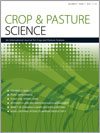A literature review was conducted to collate best practice techniques for soil compaction management within cotton-farming systems in Australia. Universally negative effects of traffic-induced soil compaction on the whole-farm system and the wider environment include: (i) increased gap between attainable and potential yields, (ii) increased costs of energy and labour, (iii) reduced fertiliser-use efficiency, (iv) reduced water use efficiency (irrigation and rainfall), (v) increased tillage intensity. Knowledge gaps that merit research priority, and research strategies, are suggested. These include: (i) identifying wider impacts on farm economics to guide decision-making and development of decision support systems that capture the effects of compaction on fertiliser, water, and energy use efficiency; (ii) predicting risks at the field or subfield scale and implementing precision management of traffic compaction; (iii) canopy management at terminal stages of the crop cycle to manipulate soil-moisture deficits before crop harvest, thereby optimising trafficability for harvesting equipment; (iv) the role of controlled traffic farming (CTF) in mitigating greenhouse gas emissions and loss of soil organic carbon, and in enhancing fertiliser and water-use efficiencies; (v) recent developments in tyre technology, such as low ground-pressure tyres, require investigation to assess their cost-effectiveness compared with other available options; and (vi) catchment-scale modelling incorporating changes in arable land-use, such as increased area under CTF coupled with no- or minimum-tillage, and variable rate technology is suggested. Such modelling should assess the potential of CTF and allied technologies to reduce sediment and nutrient losses, and improve water quality in intensively managed arable catchments. Resources must be efficiently managed within increasingly sophisticated farming systems to enable long-term economic viability of cotton production. Agronomic and environmental performance of cotton farming systems could be improved with a few changes, and possibly, at a reasonable cost. Key to managing soil compaction appears to be encouraging increased adoption of CTF. This process may benefit from financial support to growers, such as agri-environmental stewardships, and it would be assisted by product customisation from machinery manufacturers.
How to translate text using browser tools
14 January 2016
Soil compaction and controlled traffic considerations in Australian cotton-farming systems
Diogenes L. Antille,
John McL. Bennett,
Troy A. Jensen
ACCESS THE FULL ARTICLE

Crop and Pasture Science
Vol. 67 • No. 1
January 2016
Vol. 67 • No. 1
January 2016
axle load
cotton-harvesting technology
random traffic
sustainable cotton
traffic intensity
yield penalty




